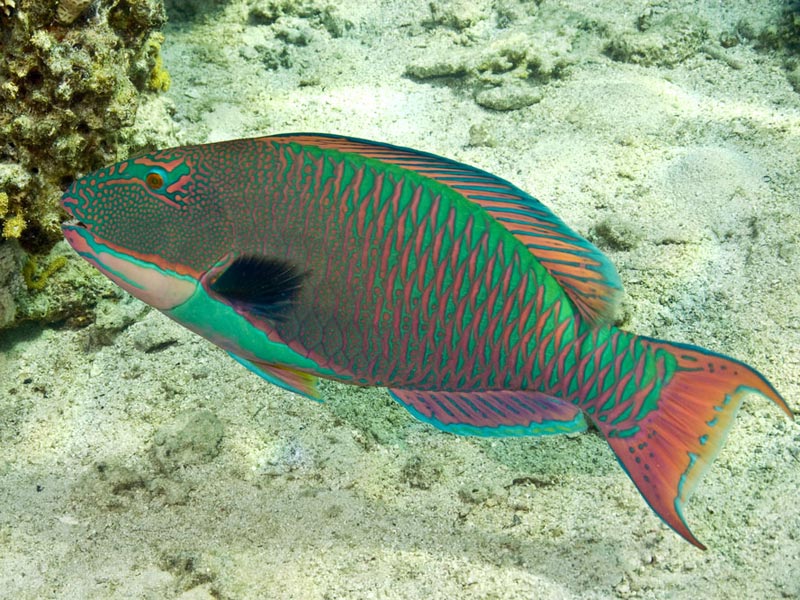Parrotfish
uhu
Scaridae
These fish are characterized by their heavy-beaked and blue green appearance. They swim primarily with their pectoral fins and undergo confusing sex and color changes as they mature. Parrotfishes are herbivorous, and their teeth are fused into strong, beaklike dental plates. They use their teeth to scrape algae from coral limestone or even to bite off chunks of living coral. And one can easily hear the scraping and biting underwater! Small wrasses may be seen hovering close by to catch bits of food dislodged by the parrotfish. Gouge marks on the coral are evidence to where they have fed. They grind the coral into fine sand with special bones in their throat. Organic matter is extracted and the sand is expelled in a cloud through the anus. The Hawaiian name for one species means "loose bowels". Parrot fish produce much of the world's coral sand.
Some parrotfish are known to secrete a thick envelope of mucus around themselves at night. The reason is not clear, but some biologists believe that this helps protect them against eels who hunt by smell. Another theory is that it wards off small crustaceans parasites. Parrotfish are very heavy sleepers and they can often be picked up by divers, photographed, and replaced without waking up.
Parrotfish are fast-moving, shy, and although extremely variable, often look alike, which makes them difficult to identify. Color patterns can differ within species, depending on age and sex, and some species can modify their pattern in seconds. Researches are still sorting out names sometimes assigned to male, female and juveniles forms of the same fish.
In Hawaiʻi parrotfishes are known as uhu. In ancient Hawaiʻi, it was said the behaviour of the uhu could tell the fishermen what his wife was doing at home. Hawaiian scholar Mary Pukui Kawena writes, "If the uhu capered and frolicke din the water it was a sure sign of too much levity… If two uhu seemed to be rubbing noses, it was a sure sign that there was flirting going on at home." A wily person, hard to catch, was called a "slippery uhu".
In the Hawaiian reefs, there are seven species of parrotfishes including three endemic. In the initial phase most parrotfish species are drab. Mature initial phase males and females (identical in appearance) sometimes spawn together in large groups, "capering and frolicking". Terminal phase parrotfishes are always male and usually brightly colored. They hold territories and mate with individual females. These "supermales" are always sex-reversed females.
